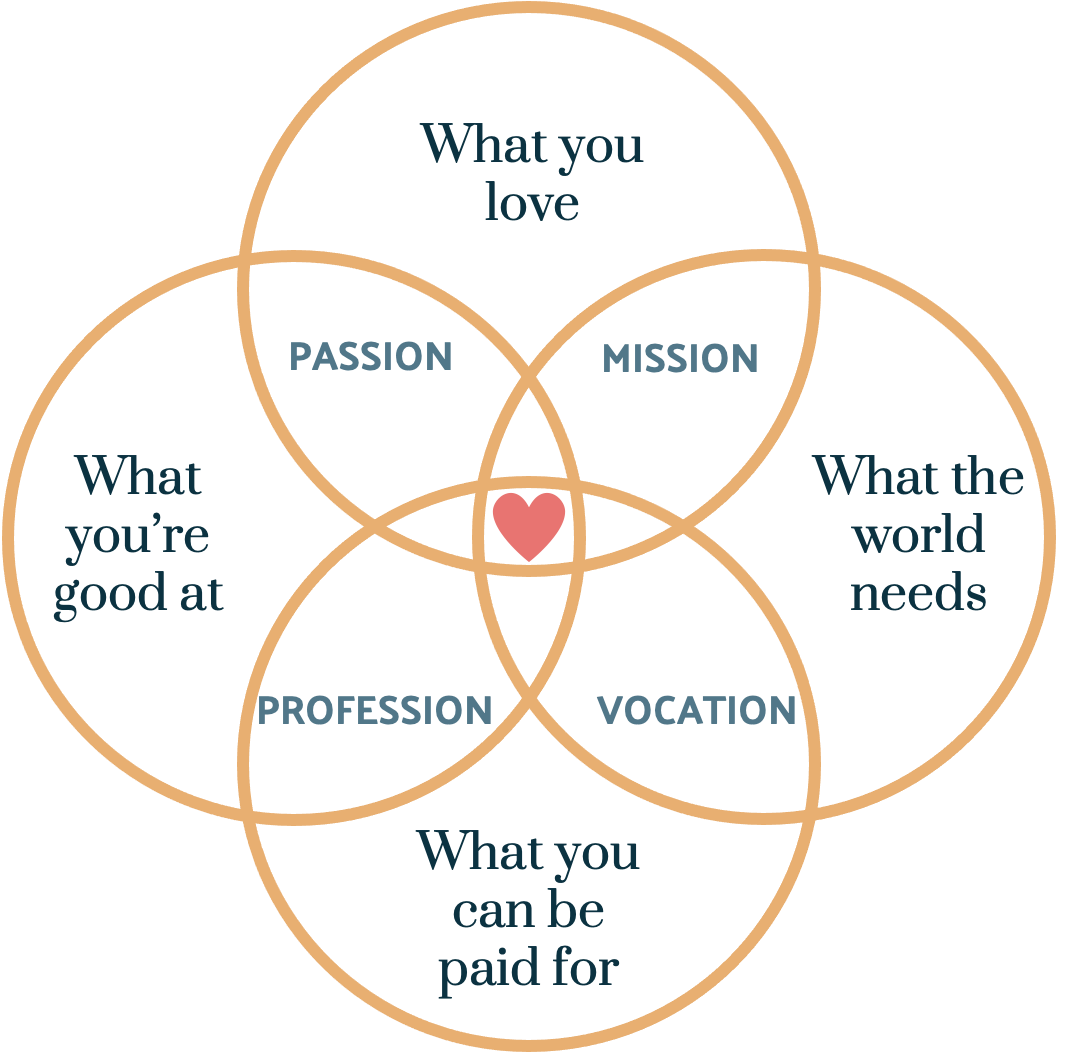How to Figure Out What You Really Want
I spent my career in healthcare specializing in continuous process improvement. My job was to help smart people solve hard problems, figure out ways to make their jobs easier, and to set the strategy for transformational change.
Continuous improvement also translates nicely to the work I do with my coaching clients. I help women take small steps every day to transform their lives, discover their strengths and purpose, and lead with intention.
I used the concept of Kaizen to help me improve my own life and find my dream career when I found myself trapped in a toxic work environment where my ideas and opinions were constantly challenged. I felt stuck and discouraged. I didn’t know where to start or what I wanted to do.
It started with a mindset shift and daily gratitude practice. From there, I started to identify my strengths and values and how I could use them to find a career I loved where I felt appreciated, valued, and respected for who I am.
Kaizen is a Japanese term that means "change for better." It’s often used as a continuous improvement philosophy to help teams and organizations make small changes toward larger transformations.
You can apply the concept of Kaizen to your own life by identifying small steps you can make to take your career to the next level. You can use it to help you figure out what you really want from your career, and your life.
Here are 6 Steps to Take to Figure Out What You Really Want:
1. Define the Problem
Defining the problem is the first step in a continuous improvement process. It’s also the most important – if you have the wrong problem, you’ll come up with the wrong solution. Especially if you don’t know what you really want.
Think about it this way: if you believe your problem is that you’re not getting the opportunities to take on more challenging projects at work, then your solution might be to get a new job. But, if the problem really is your limiting belief that you’re not good enough or a fear of failure or rejection, you’ll wind up in the same situation in a new job.
So instead of jumping right into solution mode, it’s important to take a step back and really think about what you want to change about your career. Then, you’ll use the next three steps to help you further define the problem before you can solve it.
Start by asking yourself the following questions:
What isn’t working in your career (or life) right now?
Why is it important to fix this?
What will you have once this is resolved?
Once you have a clear picture of the problem you want to solve, you can move on to the next step.
2. Mind Map the Current State
Now normally in this step of the process, I’d get out a bunch of sticky notes, markers and flip charts, and we’d start to map out the process, step by step. “What do you do next? Then what happens?”
You get the picture.
Instead, we’ll focus on the good things that are happening in your career and life. Even in dire situations, there’s always at least one positive thing you’d want to keep as you move to your next job or career.
Maybe that’s the flexibility to work from home (or anywhere), or your salary, or managing people or teams, or opportunities for travel. Think about the things you love about your job or career right now. What do you want more of? What do you not want to lose?
This exercise also helps you cultivate gratitude and appreciation for what you already have. When you don’t know what you really want from your career, gratitude can help put things into perspective.
What you appreciate appreciates. Said another way, when you feel genuine gratitude for the good things in your life, you’ll get more of those good things. And, those good feelings of appreciation will also attract more of what you want into your life.
To mind map your current state, grab a blank sheet of paper or your favorite journal. In the middle of the page, write your current job title and draw a circle around it. Then, think about what’s going well in your career right now. Write each word around the outside of your circle, and draw a line connecting it to the center circle.
Then, think about why you’re grateful for the things going well in your career. Draw a line from each of the positive things and write down why you’re grateful for that aspect of your job. Continue around the circle until you’ve filled the page with gratitude and appreciation.
3. Dig Deeper
Now that you’re feeling all the warm fuzzies from your gratitude-filled mind map, it’s time to get real. In the next step, we’ll dig deeper to uncover the limiting beliefs holding you back from making a change.
Limiting beliefs are thoughts that constrain us. Each time we give power to these thoughts, we reinforce our belief that they’re true.
Some examples of limiting beliefs are:
“I’m not smart enough” (also insert: pretty, good, thin, rich, educated, etc.)
“I don’t have enough time” (or money, experience, skills, education, etc.)
“I don’t deserve that”
“I don’t want people to think I’m being arrogant” (or pushy, entitled, bossy, etc.)
“I’ll fail if I try”
“I’m not worthy”
Limiting beliefs are the gaps holding us back from making different choices in our lives. They also prevent us from seeing ourselves as we truly are – our strengths, talents, skills and experiences. Because of this, they can prevent us from identifying or going after new opportunities to grow.
By recognizing the limiting beliefs that hold you back, you can start to make mindset shifts to overcome them. This is a crucial step toward finding a career you love – because once you remove power from these limiting beliefs, you’ll start to recognize the strengths, talents and experiences that will lead you to align with a career that’s best for you.
First, think about the limiting beliefs that hold you back. What do you tell yourself when you start to think about changing jobs or careers? What stops you from putting yourself out there? Take some time to journal about these thoughts.
Then, write down the new thoughts that will replace your limiting beliefs. What mindset shifts will you have to make to begin to see your worthiness? What will you have to think to belief you are enough?
Finally, think about what makes you powerful – your strengths, your talents, your skills, your experience, your education and training. How might these attributes help you overcome your limiting beliefs? How might they strengthen your perception of yourself?
4. Re-Think Your Options
Growing up in rural Pennsylvania and being the first person in my family to go to college, I wasn’t aware of all of the options available to me from a career standpoint. As women, we’re devastatingly aware of the lack of options in the media, TV and movies, especially for women of color. When we don’t see women like us represented in certain jobs or careers, we don’t see that option as available to us.
There are so many different jobs and careers out there, and new jobs are being created every day. Sometimes, it takes creativity, brainstorming and open-mindedness to discover a new option. A tool I love using to help me with this is the Ikigai.
Ikigai is a Japanese term which, loosely translated, means “a reason to live,” or our life’s purpose. Ikigai is the common ground between what we love, what we’re good at, what the world needs, and what we can be paid for. Here’s a diagram to help you visualize this:
Finding and realizing your ikigai will not happen overnight. By working toward our ikigai over time, we will continue to grow and develop in our chosen fields or professions. And because our ikigai is our choice, we can feel a sense of autonomy over the journey it takes to get there.
To create your ikigai, start with each of the four main areas of the circle. Write down the activities and topics you love and the things you are good at. Next, think about what the world needs, specifically from you. Finally, what can you be paid for in relation to your talents and experience.
Next, start making connections between each of the circles. For example, what do you love that the world also needs? What are you good at that you can be paid for? Answering these questions will help you identify ways of achieving balance within the circles.
When you feel that you have an adequate sense of yourself, brainstorm a few things that could be your ikigai, or how all four areas could intersect and what that might look like in your life. Then ask yourself what you need to start and stop doing to get there.
Related: How to Turn Your Strengths & Passions into a Thriving Business
5. Try on Different Futures
Once you’ve completed your ikigai, you can start to see the various options available to you. You may have some ah-ha moments, and you may not have realized that the unique strengths, skills, and experiences that you have could translate into many different career paths.
Now, take a look at your ikigai. What career paths seem interesting to you? Where could you see yourself fitting in to those jobs or careers? What would it be like to live a day in the life of someone in those careers?
Next, grab your journal, or use this workbook, and write your day in the life story. How do you feel about this new career path? What kind of people are you surrounded by? What kind of projects are you working on? What salary are you making, and what does that salary allow you to do? How do you feel when you wake up in the morning?
Take time to think through and journal about your potential future. Journaling about your future is a powerful tool to help you visualize yourself in a new job or career. By seeing yourself in a new option, you’re creating a challenge for your brain to help you get there. You’ll also realize if you can truly see yourself in that career, if it feels natural or easy, or if it feels forced.
This journaling exercise will help you realize what you really want from a job or career, and allow you to sort through job postings or offers to find the one that truly aligns with how you want to feel.
6. Plan Your Powerful Action
All of the steps above are so important in figuring out what you really want from a career, but they mean nothing if you don’t take action.
Remember that kaizen is all about small things you can do each day to grow and improve over time. These small steps can lead you to transform your life and career.
Taking action is also the best way to build confidence. I believe that confidence is the foundation for getting what you want from your career and life, and it’s essential for women who want to change the world. But confidence doesn’t come overnight. It comes from stepping outside your comfort zone. From trying scary things. From failing and making mistakes and learning from your past. Confidence comes from taking action toward your goals.
Think about what action you can take today. Perhaps you’ll start a gratitude ritual or morning routine. Maybe you need to update your resume or start browsing LinkedIn for ideas on what’s out there. You can call a friend or colleague to ask about their experience in their career. Or, you can look into trainings and certifications you might need to change careers.
Whatever your powerful action is, write it down and complete it as soon as possible. The sooner you start making small changes, the sooner you will build the habit of moving forward. And the sooner you will build your self-confidence.
The Takeaway
It is possible to find a fulfilling career that allows you to use your strengths and aligns with your personal values. Even if you don't know where to start or what you really want.
Take the first step now: Follow these 6 steps toward personal transformation. Work through one step over the next 6 days. Give yourself the time and space to do answer the questions and imagine your dream career.
…
Figuring out what you really want is only the beginning. If you want to achieve success in your career, get paid for what you already know, and finally feel valued and appreciated at work, it’s time to discover your Firepower Leadership Style! Take the free quiz to learn how to stand out as a leader and earn the income you deserve - by being who you already are. Click here to take the free Firepower Leadership Styles Quiz now!


